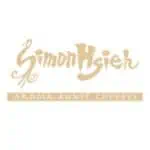Top-Rated Coffees (94+ points)
We found 2188 coffees and espressos that earned an outstanding score of 94 points or higher. The reviews below appear in reverse chronological order by review date. Older reviews may no longer accurately reflect current versions of the same coffee.
Intense but rounded aromas suggesting grapefruit and fragrant tropical wood. The aromatic characteristics deepen in the cup, reflecting an almost juicy sweetness complicated by continued aromatic wood and pungently complex fruit notes: grapefruit, white grape, mango perhaps. Clean, rich finish, with the flavor notes softening but lingering deeply in the long.
Pungent, roast-influenced citrus reads as grapefruit in aroma and cup, supported by backgrounded aromatic wood and leafy earth notes. Round, resonant acidity, deep natural sweetness, syrupy body. The grapefruit and earth notes carry into a long, opulent finish.
Crisp, sweetly pungent aroma: tart berry, lemon, nut, aromatic wood. In the cup delicately rich acidity, silky mouthfeel. Continued tart yet lushly sweet berry notes with a hint of earth complicate the aromatic wood notes. Long, flavor-saturated finish.
Price: NA
Startlingly intense, sweet-toned notes of ripe lemon, baker's chocolate and night flowers runs through the profile aroma through finish. Roundly rich acidity, plush mouthfeel. The baker's chocolate sweetens toward a crisp bittersweet chocolate in the cup and finish.
Deep and penetrating floral aroma: orangy sweetness and blackberries. Gentle acidity, smooth mouthfeel, and an intense, flavor-saturated character in the cup: classic black currant notes mingle forcefully with the concentrated sweetness of dried berries and flowers. Long, intensely sweet finish with the flavor notes delicately lingering and softening toward a fruit-toned chocolate.
Delicate, tartly crisp profile. In the aroma pungent nut, semi-sweet chocolate. In the cup balanced acidity, silky mouthfeel, intense sweetness with continued nut and dry chocolate notes. Very sweet, very long, flavor-saturated finish.
Pungent aroma of mixed fruit, a fir-like wood and honey. These aromatic notes grow more intense and complex in the cup, displaying suggestions of herb and a more fragrant, cedar-toned wood. The fruit notes - berry, stone fruit, citrus and black currant - become more prominent as the cup cools, persisting in a long, flavor-rich finish.
Intense aroma: round fruitiness suggesting black currant, mixed berries, lemon, toast, soft night flowers. Bright-toned acidity, medium body with a delicately syrupy mouthfeel and a particularly juicy tartness suggesting something like Satsuma oranges in syrup, together with continuing notes of flowers and berries, all lingering deeply into the finish.
Intense cocoa, lemon and floral notes in the aroma. In the cup rich acidity, lightly syrupy body, dry lemony cocoa, lush night flowers, and a distinct spice note suggesting nutmeg, all carrying majestically into the long, deeply flavor-saturated finish.
Sweetly pungent fruit and fresh earth notes throughout the profile. Crisp and grapefruit-like in the aroma, in the cup rich with moist, just decaying fallen leaves and deeper fruit notes; tart cherry perhaps. Leanish but silky mouthfeel. Very sweet, almost sugary in the flavor-saturated finish.
Subtle flower-toned aroma with distinct notes of tangerine. Brightly balanced acidity, smooth mouthfeel with delicate yet sustained flavors: more flowers, milky chocolate, and fruit suggesting cherry and black currant. Clean finish with the sweet fruit character gently carrying into the long.
Complex aromatic profile - spice notes read as cinnamon and cardamom, ripe stone-fruit sweetness and suggestions of chocolate. In the cup a syrupy mouthfeel supports an intense fruit character: honey-like Casaba melon, plum, nectarine. Cinnamon makes a return appearance in the smooth, caramelly finish.
Intensely aromatic yet finely balanced. The rich aroma is dominated by a pungent cedar sensation with backgrounded caramelly chocolate sweetness and a hint of flowers. The chocolaty fruit and night floral notes move lushly forward in the cup, persisting into the finish. Soft acidity, lightly syrupy mouthfeel.
Delicately rich, balanced but gracefully intense coffee. High-toned aroma with flowers, nut and a hint of pungent cedar. Richly tart, opulent acidity; full, lightly syrupy mouthfeel. The flavor is dominated by voluptuous notes of night flowers, orange, tart cherry, nut, all of which coast into a long, deep, clean finish.
Intensely sweet flavor and aroma dominated by flowers, apricot and tangerine. Soft, syrupy mouthfeel, bright-toned but balanced acidity and a remarkably rich, brandy-toned flavor. Crisp finish with sweet stone fruit notes lingering in the long.
"An absolutely mind-blowing coffee" for co-cupper Andy Newbom (93). "Utterly pure yet soaringly intense," for Ken (97). "Say fruit ten times," Andy reports, and then he does, mainly variations of grapefruit, apricot and melon with green apple and Bartlett pear thrown in for the finish. For Ken that entire nuance is wrapped up in the extraordinary, singular explosion of cedary, pungently sweet berry, the quintessential Bourbon character. The acidity is enveloped in sweetness; in Andy's colorful language it "startles and snuggles all at once." For mouthfeel Andy suggests "crème fraîche Meyer lemon chiffon"; Ken sticks with a pedestrian "syrupy." Ken awarded a perfect 10 to the long, balanced, deeply flavor-saturated finish.
Clean, complex, impeccable. Exhilaratingly dominated by crisp, nut-toned dry berry (blackberry, ripe black currant) in aroma and cup. Lush, lightly wine-toned acidity; medium body; syrupy mouthfeel. The underlying sweetness in the cup carries into the long, flavor-permeated finish.
Co-cupper Jim Reynolds (95): "This coffee scored well in every category. I especially liked the floral acidity - a nice vanilla and chocolate aspect to the flavor complemented the smooth - very smooth - mouthfeel." Ken's praise (94) was nearly identical, though he added "spicy fruit" and a hint of lemon to his descriptors. Impressive flavor persistence in a long, rich finish.
Co-taster Byron Holcomb (94): "On the nose, I got inviting, complex floral and strawberry notes. The body was vivacious - I could have said round, sweet, with a little savory edge, comforting, but vivacious will do." Both Ken (94) and Byron found chocolate and malt in the flavor, with an assortment of additional descriptors that testify to the complexity of this blend: "cedar, butter" (Ken), "lemon bar, spice" (Byron). Both were impressed by the big, sweet, chocolaty bloom in milk, which Byron found was complicated by a continued, brightening hint of lemon zest. It appears that a very controlled, judicious use of cleanly fruity-fermented dry-processed coffees contributed to the round, sweet, complex richness of this versatile blend.
Grandly fruity and sweetly fermented profile: port wine, raisiny dark chocolate, night flowers, blueberry, all carry with giddy intensity from aroma through cup to the long finish. Wine-like acidity, syrupy body, deep sweetness.
















